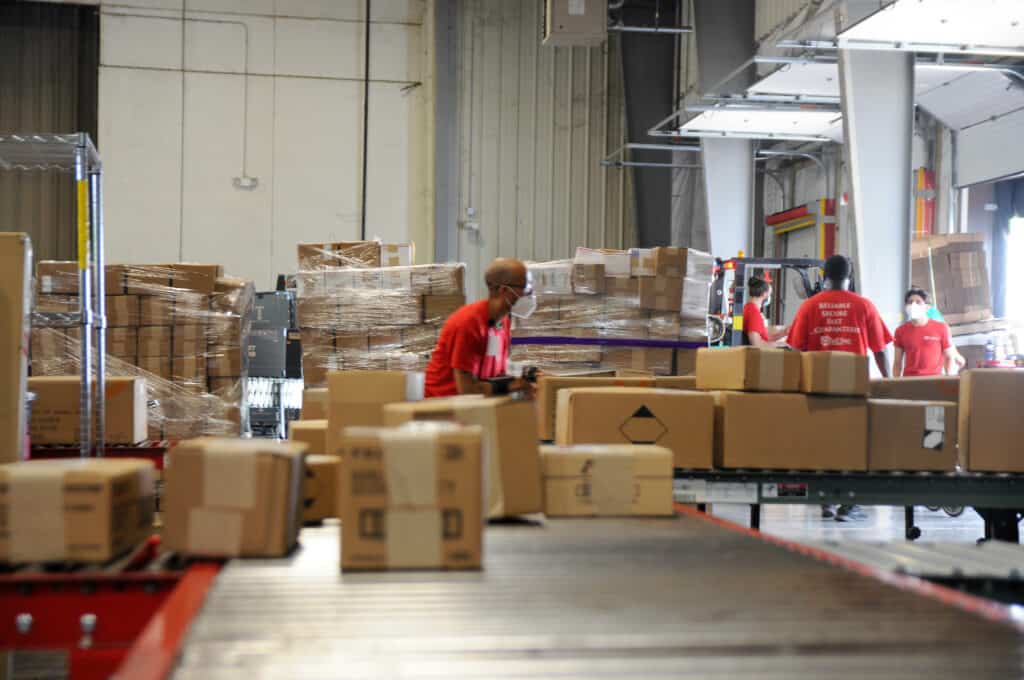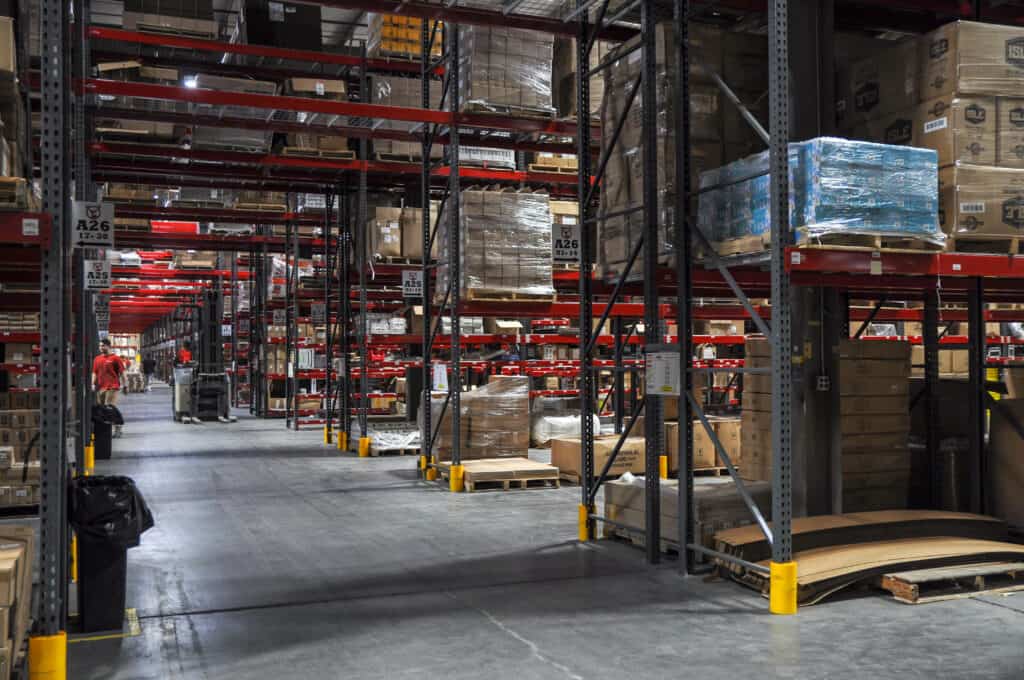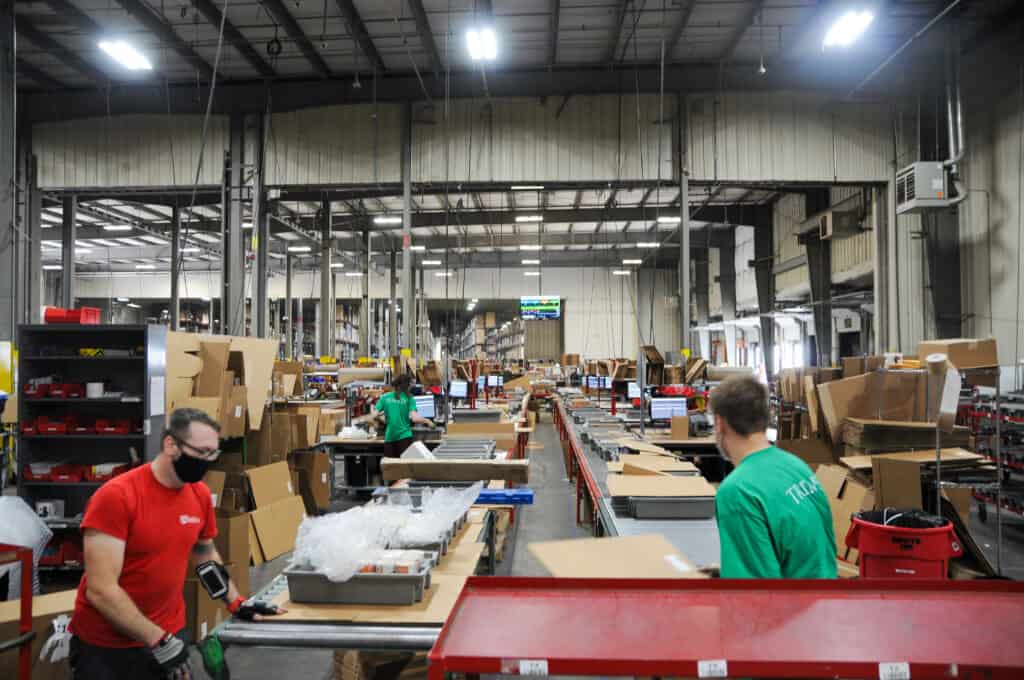Economic order quantity, or EOQ, is a formula that helps you figure out the right amount of stock to fill your orders during the year ahead. Economic order quantity helps you reduce the amount of money you have tied up in inventory while ensuring that you don’t run out of products to sell.
EOQ does have some limitations, however. Economic order quantity calculations work best for businesses where demand is fairly steady. The EOQ formula doesn’t factor in changes due to outside economic factors (such as a global pandemic).

Economic order quantity is still extremely valuable. It gives you a solid number that you can plan your supply chain operations around. EOQ helps you understand your cash flow and plan your finances accordingly. Good inventory management is an essential aspect of your eCommerce business.
Economic order quantity terms
Before diving into the EOQ formula, it’s important to define some basic terms.
Demand rate
Demand rate is the amount of inventory your business sells in a set period of time. This is usually annual demand. However, if you experience seasonal fluctuations in demand, you could calculate demand rate on a quarterly or monthly basis.
Fixed cost and variable cost
A fixed cost is one that doesn’t change, whether you sell a little or a lot. Fixed costs may include rent, salaries, and insurance. A variable cost is a cost that changes depending on the amount of inventory you purchase.
Fixed costs are part of your overhead. Variable costs are part of your cost of goods sold.
Holding cost
The holding cost of your products is the amount you pay for storing your products. Holding costs include warehousing fees and insurance. You also have to figure out the cost of interest on the money that you have tied up in your stock. This could be interest on a business loan or the interest you could have earned by investing the cash instead. The holding cost is a variable cost.

Ordering cost
The ordering cost, or setup cost, is the amount you spend per order to place a wholesale order. Setup costs don’t include the wholesale price of the product. Ordering cost includes the cost to ship an order, to receive products in the warehouse, and for staff time to oversee the production of the order. This is a fixed cost.
Unit cost
The unit cost is the cost to buy one unit of your product. This is a variable cost. Your unit cost may go up and down due to fluctuations in the wholesale price. In addition, the amount you spend on buying merchandise will vary depending on how much you sell and how much inventory you keep on hand.
Shortage cost
When you run out of product, you can incur a shortage cost. Shortage costs include revenue from lost sales, customers who shop elsewhere and don’t return, and expedited shipping to rush delivery of backorders.
How do you calculate economic order quantity?
Before you can complete the EOQ formula for your eCommerce business, you need to understand the components of the calculation.
D is the demand rate, or the amount of product you sell per year. S is the ordering or setup cost. H is the holding cost. You’ll do a separate EOQ formula for each product you sell.
The EOQ formula is expressed as:
EOQ = √2DS/H
Or
Economic order quantity = square root of (2 x Demand rate (annual sales) x Annual ordering cost) / (holding cost).
EOQ example
Let’s take an example of EOQ. Caitlin has an online shop where she sells embroidery supplies. Last year, she sold 1,000 embroidery kits. Her ordering cost is $3 per kit. Her holding costs total $4 per kit.
Caitlin’s EOQ formula is:
EOQ = √(2 x 1000 x 3) / 4
Or
EOQ = 39
Based on her sales volume and carrying costs, Caitlin should reorder her embroidery kits when she gets down to 39 left in stock. Her EOQ formula will help ensure that she doesn’t run out of inventory of this item.
Downsides of economic order quantity
The EOQ formula gives good information, but it can only tell you so much about your business. It can’t factor in fluctuations in demand or supply chain disruptions.
For example, Caitlin’s business had held steady for several years. Then the coronavirus hit, and the demand for craft kits spiked. She immediately sold out of her embroidery kits. At the same time, the supply chain broke down, and she couldn’t get the embroidery hoops and thread she needed to complete the kits.
Caitlin ended up driving 200 miles to reach a supplier that had what she needed in stock. That pushed her ordering costs through the roof at the same time that her demand skyrocketed. The EOQ formula couldn’t factor in the effects of a demand spike or a supply chain disruption, much less both at once.

What is economic order quantity in supply chain management?
Economic order quantity is a tool for better inventory management. Inventory management, in turn, is essential for supply chain management. EOQ helps you understand your ideal inventory levels. That helps you manage your supply chain for maximum profit.
If your demand rate is stable, economic order quantity can help you avoid buying too much inventory. EOQ will help keep you from getting stuck with deadstock. Deadstock (items on the shelf that aren’t selling) can create an invisible hole that drains your profits.
The calculation also helps you manage your supply chain better. If you know how much you need to order over the course of a year, you can plan purchases to dovetail with your cash flow. You back out your order time to make sure it allows enough time for your products to move through the supply chain without rush charges. Your advance planning could also help give your orders priority with your suppliers in the event of a supply chain disruption.

How you can use EOQ to improve your inventory management
In addition to holding costs, inventory that sits on the shelves for too long has an opportunity cost. You can’t use the capital you have tied up in that inventory to improve or grow your business. Products may become outdated or deteriorate on the shelves. You might need to sell them at a discount. Because of these factors, the holding costs of ordering too much product may be even higher than the EOQ formula indicates.
The sweet spot of having just the right amount of product on the shelves is tricky to achieve. You have to adjust for seasonal variations and fluctuations in the availability of raw materials. Good inventory management finds that sweet spot. EOQ is a tool to help you get there.
Your order fulfillment company can help you calculate your economic order quantity. At Red Stag Fulfillment, we believe inventory management assistance is one of the most important services we provide our customers. We can help you figure out your annual holding costs and find places where you can improve your inventory management. Please give us a call. We’d love to help.









